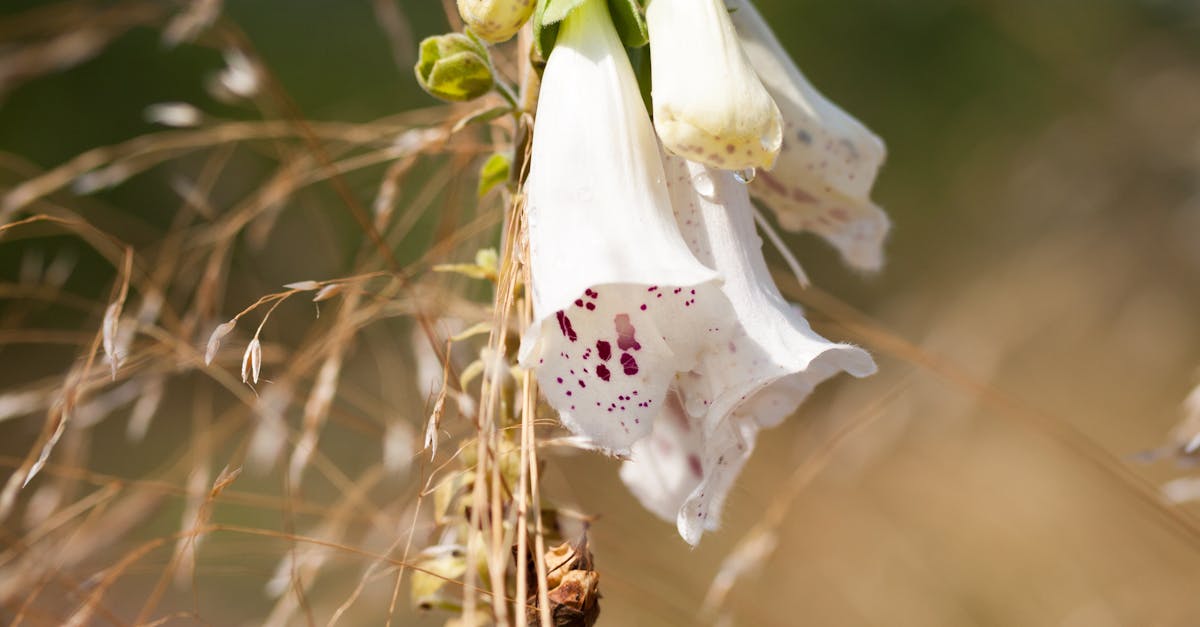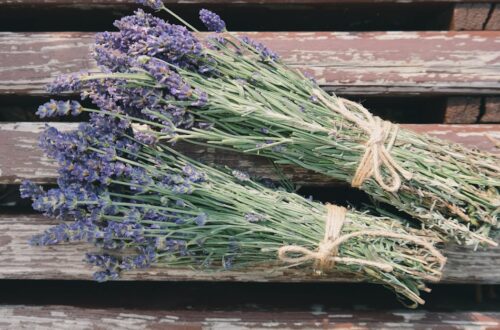Growing foxglove from seed is an exciting gardening endeavor that transforms your outdoor space into a vibrant display of colors. Renowned for its stunning bell-shaped flowers and medicinal properties, Digitalis purpurea (foxglove) not only enhances your garden’s aesthetic appeal but also supports local wildlife. Whether you’re an experienced horticulturist or a beginner, this complete guide will provide you with all the essential steps to successfully grow and nurture these captivating plants from seeds. Let’s delve into the nuances of sowing, caring, and cultivating foxglove to create a flourishing floral haven.
Understanding Foxglove Seeds
Understanding the different types of foxglove seeds is crucial for successful cultivation. Digitalis purpurea is the most recognized species, known for its towering spikes and vibrant flowers. Other species, such as Digitalis lutea and Digitalis ferruginea, offer unique color palettes, enhancing garden diversity. Planting conditions, like soil type and climate, significantly influence germination rates. Foxglove seeds require moist, well-draining soil and indirect sunlight for optimal growth. Typically, germination occurs within 14 to 30 days, provided the right conditions. Be sure to utilize high-quality seeds to improve your success. Start at least 6 weeks before the last frost to ensure healthy seedlings. If you’re interested in growing foxglove from seed, starting indoors may expedite this process, allowing for vigorous plants when transplanted.
Types of Foxglove Seeds
The primary types of foxglove seeds include Digitalis purpurea, Digitalis lutea, and Digitalis grandiflora. Each species features distinct characteristics that appeal to gardeners.
Seed Characteristics and Germination Rates
Foxglove seeds are small and require specific conditions to germinate. They typically germinate within 14 to 30 days, depending on care.

Preparing for Planting
Before embarking on the journey of planting foxglove, selecting an ideal location is essential. Ideally, choose a site that receives partial shade, which is perfect for this beautiful plant that thrives under filtered sunlight. The soil must be well-draining and rich in organic matter, so consider testing its pH to ensure optimal conditions. Aim for a slightly acidic to neutral soil, as this will enhance growth and flowering. Furthermore, essential gardening tools such as seed trays, a trowel, and high-quality seeds are crucial. Start your seeds indoors about 8-10 weeks before the last frost to increase your chances of a bountiful bloom. By laying this groundwork, you set the stage for successful growing foxglove from seed.
Choosing the Right Location
Selecting a site that offers partial shade is key for healthy foxglove growth.
Soil Preparation and Testing
Test your soil’s pH and ensure it’s well-draining and rich in organic matter.
Gathering Necessary Tools and Materials
Essential tools include seed trays, a trowel, and quality foxglove seeds.

Sowing the Seeds
When it comes to sowing foxglove seeds, you have two primary options: direct sowing into the garden or starting indoors. Direct sowing can be simpler and allows the plants to adapt naturally to your local environment. On the other hand, indoor seed starting provides better control over germination conditions and can extend your growing season, especially in cooler climates. Choose the method that best suits your gardening style and climate. For optimal success, aim to sow seeds in well-drained soil with adequate moisture. A soil temperature of around 60-68°F (15-20°C) is ideal for germination, which typically takes 14-21 days. These tips will guide you in the process, ensuring your foxglove plants flourish!
Direct Sowing Vs. Indoor Seed Starting
In the choice between direct sowing and indoor seed starting, consider your garden’s climate. Direct sowing is perfect for warmer areas where foxgloves thrive with minimal intervention. Conversely, starting seeds indoors allows earlier blooms and ensures a controlled environment. Both methods have advantages; the key is knowing the conditions of your space.
Optimal Sowing Conditions and Techniques
Optimal sowing conditions include well-drained soil and consistent moisture. Ensure you plant seeds at the right depth, usually about 1/8 inch deep, in early spring or late summer. Maintaining a soil temperature of around 60-68°F will encourage better germination rates and lead to healthier plants.

Caring for Young Foxglove Plants
Caring for young foxglove plants is essential for their growth and success. Firstly, ensure consistent watering; young plants prefer moist soil but avoid waterlogging. Providing a balanced fertilizer every four weeks supports their development, particularly nitrogen and phosphorus, critical for healthy foliage and flowering. Secondly, monitor for pests such as aphids and slugs, which can hinder growth. Implementing organic pest control methods, such as neem oil or hand-picking, can safeguard your plants. Additionally, being vigilant about fungal diseases helps maintain plant health. Regularly inspect leaves for discoloration and ensure adequate air circulation. Following these care practices ensures your foxglove thrives as it matures, setting a solid foundation for future blooms.
Watering and Fertilization Needs
Proper watering and fertilization are vital for young foxglove plants. Maintain moist but not soggy soil and use a diluted, balanced fertilizer to boost their initial growth.
Pest and Disease Management
Effective pest and disease management can protect young foxglove plants. Monitor for common pests and apply organic controls to maintain a healthy growing environment.

Transplanting Foxglove
Transplanting foxglove seedlings is a critical step for robust growth. Aim for transplanting when seedlings reach about 4 to 6 inches in height, usually 6 to 8 weeks after germination. This timing allows seedlings to establish strong roots, which are essential for flourishing in your garden. Proper care at this stage promotes healthy flowering later on. Make sure to choose a cloudy day or transplant in the late afternoon to reduce stress on the delicate plants. As you prepare the new site, ensure the soil is well-drained and rich in organic matter for optimal growth. In addition, water the seedlings a day prior to transplanting to support their resilience. Following these guidelines will significantly enhance your success in growing foxglove from seed and ensure your garden showcases their stunning blooms.
When to Transplant Seedlings
Transplant seedlings when they are 4 to 6 inches tall, typically 6 to 8 weeks post-germination.
Techniques for Successful Transplanting
Transplant on cloudy days to minimize stress, ensuring soil is well-drained and enriched.

Harvesting and Maintenance
To successfully harvest foxglove seeds, wait until the seed pods have turned brown and dry, typically in late summer or early fall. At this stage, carefully cut the pods to prevent them from bursting and scattering seeds. Foxglove plants can produce thousands of seeds, making it easier to plant next season. Post-harvest, ensure to store the seeds in a cool, dry place to maintain their viability, allowing you to start growing foxglove from seed effectively next year.
When to Harvest Seeds
Harvest seeds when the pods are brown and dry, usually late summer to early fall.
Post-Bloom Care and Maintenance
Post-bloom, trim off spent flowers to encourage further blooms and provide adequate water during dry spells.

Common Challenges and Solutions
One of the primary hurdles when growing foxglove from seed is poor germination. This can occur due to several factors, including inadequate light or moisture. To improve your germination rates, ensure that you soak seeds in water for 24 hours before planting, as this enhances their viability. Additionally, using a seed-starting mix can create a more favorable environment for sprouting.
Pest infestations can also threaten young foxglove plants. To address this, regularly inspect your seedlings and apply natural pest control solutions, like neem oil, to deter common pests without harming your plants. Implementing these strategies will help ensure that your foxglove thrives in your garden.
Dealing with Poor Germination
To enhance germination rates, soak seeds and use a good starting mix.
Addressing Pest Infestations
Utilize natural pest control like neem oil to protect seedlings.

Conclusion
In conclusion, growing foxglove from seed requires careful planning, attention to detail, and a little patience, but the rewards are substantial. With its majestic blooms and ability to thrive in various conditions, foxglove can be a standout element in your garden. Follow this comprehensive guide and watch your foxglove flourish, adding beauty and biodiversity to your outdoor haven.






